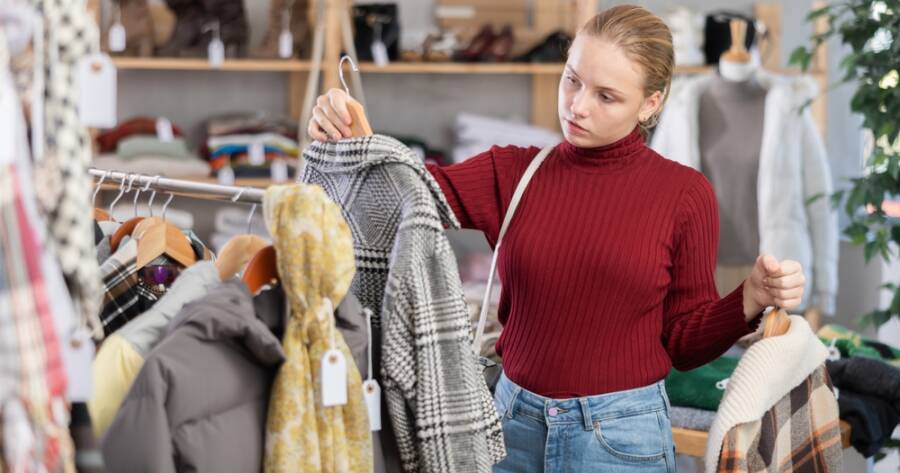Shopping for new clothes at the start of every season can be tempting, but it often leads to cluttered closets and wasted money. The key to dressing well all year long isn’t owning more—it’s owning smarter. With a little planning and organization, you can build a wardrobe that transitions effortlessly through changing weather and trends. By learning to mix, match, and layer strategically, you’ll always have something to wear without overbuying or feeling like you need a new wardrobe every few months.
1. Start with a Year-Round Core Wardrobe
The foundation of a functional wardrobe is a set of reliable basics that work in any season. These are your timeless staples—pieces that can be layered, dressed up, or dressed down depending on the weather. Think of items like a white shirt, quality jeans, neutral t-shirts, a light sweater, and a classic blazer.
When you invest in versatile clothing, you minimize the need for constant shopping. A well-fitting pair of trousers or a neutral cardigan can easily adapt to different outfits all year long. Focus on neutral colors like black, gray, beige, and navy, which mix and match easily with brighter, seasonal pieces.
The goal is to create a “base” wardrobe that you wear in every season. Once you have that foundation, you can add only a few key items each season to refresh your look.
2. Layering: The Secret to Seasonal Flexibility
Layering is one of the most effective ways to adapt your wardrobe to different temperatures without buying more clothes. Instead of owning separate wardrobes for each season, learn to combine lightweight and heavier pieces creatively.
In spring and fall, layering allows you to adjust to fluctuating temperatures—think a light jacket over a t-shirt, or a cardigan paired with a dress. In winter, those same items can serve as base layers under heavier coats or sweaters. Summer outfits, like sleeveless tops or light dresses, can also carry into cooler months when paired with a denim jacket or tights.
A few smart accessories—like scarves, hats, or gloves—can also help extend the life of your outfits across seasons. Layering not only saves money but also encourages creativity by allowing you to get more mileage out of what you already own.
3. Plan Ahead and Shop with Purpose
Impulse buying is one of the biggest reasons wardrobes overflow with clothes we rarely wear. The solution is simple: plan before you shop. Take time at the start of each season to evaluate what you already have. Make note of what fits well, what needs repair, and what gaps exist.
Once you know what’s missing, make a short, specific shopping list. Maybe you need a lightweight jacket for spring or new walking shoes for fall. Stick to that list when shopping to avoid unnecessary purchases.
Another helpful strategy is to shop your own closet first. Sometimes, a forgotten piece at the back of a drawer can fill a wardrobe gap perfectly. When you approach your closet with fresh eyes, you’ll often realize you already have more options than you thought.
This kind of mindful shopping not only prevents overbuying but also helps you develop a stronger sense of personal style—one based on intention rather than impulse.
4. Rotate and Store Clothes Thoughtfully
Keeping your closet organized by season helps you see what you actually wear. When the weather changes, rotate your wardrobe so that the current season’s clothes are front and center while off-season items are neatly stored away.
Store clothing in clean, breathable containers or fabric bags to prevent damage. Before packing items away, make sure they’re clean and completely dry. This simple habit preserves the quality of your clothes and makes the next season’s switch effortless.
As you rotate items, take the opportunity to declutter. If something hasn’t been worn in over a year, consider donating or selling it. Regularly editing your wardrobe keeps it functional and prevents you from feeling overwhelmed by too many choices.
5. Use Accessories to Refresh, Not Replace
Accessories are an affordable and sustainable way to update your look each season without buying new clothes. A scarf in a bright color, a statement necklace, or a different pair of shoes can completely transform an outfit.
For example, a simple dress can look casual with sneakers in summer or elegant with boots and a belt in winter. Small seasonal updates like these keep your style feeling current while ensuring that your core wardrobe remains timeless and reusable.
When you view accessories as tools to enhance what you already own, you’ll realize you need far fewer new clothes than you might think.
Simplify, Plan, and Enjoy Your Style
Building a wardrobe for every season doesn’t require endless shopping—it requires intention. By investing in timeless basics, mastering layering, and planning purchases with purpose, you can create a closet that works all year long.
A thoughtful wardrobe saves time, money, and space, while helping you look polished in every season. When you buy less but choose wisely, your clothes last longer, your mornings feel easier, and your style becomes a reflection of who you are—not what’s on sale.

